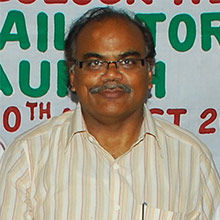Cotton cultivation is intensive in Gulbarga, Davangere, Raichur, and Haveri districts of Karnataka. The state accounted for 6.55 per cent of cotton area (4.66 lakh hectares) and 7.02 per cent of the cotton production (10.15 lakh bales) in the country in 2007. However, cotton production is influenced by global and national cotton production and prices. With an increase in prices, there is an expectation among farmers, leading to an increase in cotton area.
According to the International Cotton Advisory Committee (ICAC), global cotton production is expected to be 27.4 million tons in 2011/12 - a rise of 12%. In 2009-10, it was 21.9 million tons and increased to 24.5 million tons in 2010-11. However, in comparison, the increase in production is relatively small considering the doubling of prices experienced in 2010/11. Even though cotton production will increase more than the demand in 2011/12, high prices and competition from chemical fibers are expected to limit growth in mill use to 3%. Limited resources (including land, seeds, water, and equipment) and competition from food crops are preventing cotton area from rising further in 2011/12.
India has the largest cotton acreage globally, and cotton is the dominant fiber in the Indian textile industry. Most of the cotton used in India is grown locally, although the low quantum of imports has started registering significant growth during the last few years. Despite recent market setbacks, cotton continues to play a significant role in the rural economy of semi-arid regions in India, influencing the livelihoods of an estimated 20 million people.
The advent of mechanization during the 19th and 20th centuries, and the continuing decline of the household industry, saw both growers and weavers becoming clients of the intermediary spinning mills. This dependency, coupled with "green revolution" initiatives (seventies), witnessed the accentuation of input-intensive cultivation practices. On top of this, the liberalization of the Indian economy and the opening up of domestic markets in line with multilateral trade dialogue during the late nineties have seen intensified competition that has brought environmental, economic, and social impacts. Members of two primary producer communities in this supply chain - cotton growers and handloom weavers - have been committing suicides (mostly reported in Andhra Pradesh and Karnataka), with women engaged in these two occupations getting further marginalized.
In India, cotton accounts for 70% of total fiber consumption in the textile sector, and within the handloom sector, cotton dominates as the primary input and accounts for nearly 83% of the total handloom cloth production. Cotton is cultivated on 5% cultivable land but consumes 54% of total pesticides used in agriculture. India is one of the largest producers of cotton. It also has the largest concentration of handlooms. Together, these cotton farmers and handloom weavers form a part of what may be called the 'primary cotton-textile supply chain'.
The author is an Independent Textile Analyst
This article was presented in Challenges for Cotton Production and Marketing: Understanding Policies of Growth at Raichur on 22nd April, 2011.








Comments